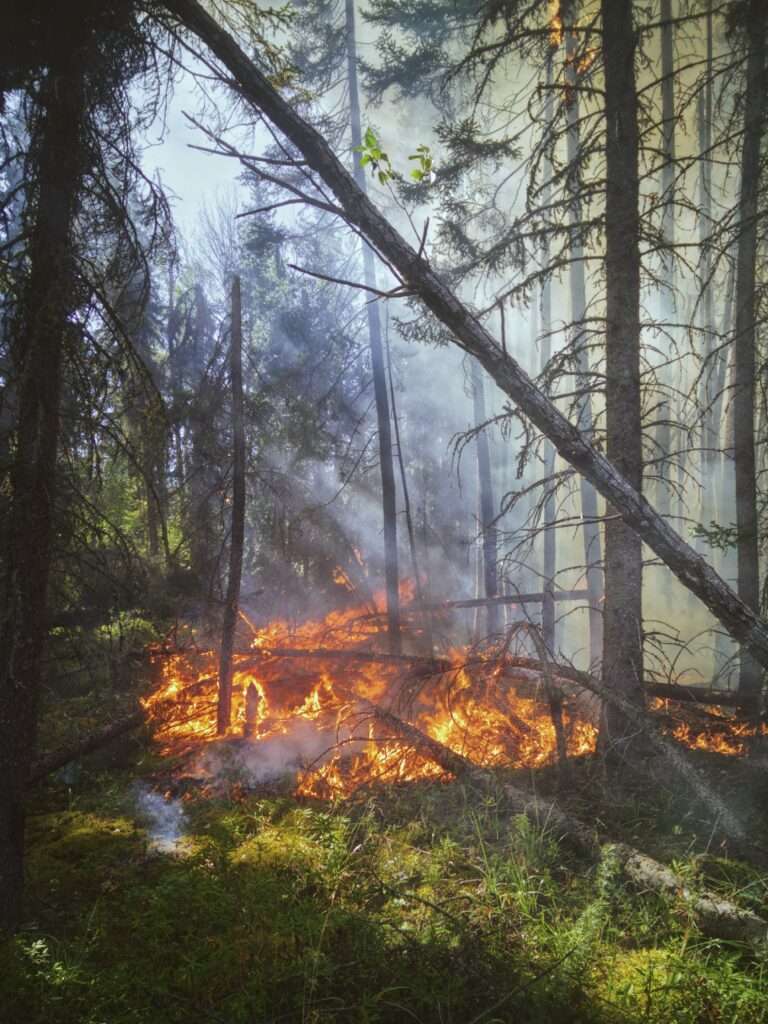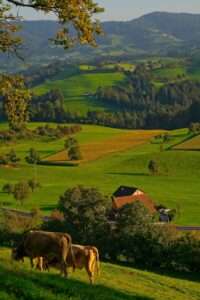will never forget the first time I killed a tree. It was a warm January morning, and my forehead was sweating under my orange hardhat. I pulled the starter rope of my chainsaw, lifted the roaring silver blade, and sliced through a small Douglas fir. The tree barely made a sound as it fell.
With sawdust and the smell of fresh resin filling the air, I turned toward another fir and paused, wishing I knew a ritual to make its death easier. Within minutes, bits and pieces of seven trees lay strewn around me. I separated limbs from trunks and stacked them, hoping that orderly piles of firewood might alleviate my guilt.
I live in coastal Sonoma County, California, where Douglas firs grow faster than most other native trees, eventually shading oaks from sun and often killing them. The trees near my cabin are valley oaks, the largest of American oaks, found only in California. Each of them can live up to 600 years and will drop as many as 3 million acorns during its lifetime, making valley oaks the most important source of food and shelter for wildlife. I wanted to protect these ecological linchpins, but I also picked up that chainsaw three years ago to repay a childhood debt.
I love all trees, but I’m especially moved by oaks. One of my earliest memories is of hiding in the roots of a particularly majestic one as my parents fought and neighbors called the police. I remember its large, sturdy trunk protecting me from the wind, rain, and fear of violence. That tree still stands in southeastern Latvia, where I spent most of my life until my mother and I moved to San Francisco in 1994.
Eight years ago, I returned to my rural roots and found a home in the coastal range 70 miles north of San Francisco, on the unceded land of the Kashia Pomo people. The few remaining oaks here are surrounded by a sea of Douglas firs stretching to the Pacific Ocean.
For over a century, the American environmental movement has been animated by an intuitive and simple idea: Protecting trees means leaving forests alone. This stance — championed by men like John Muir and based on their belief that any alteration, including thinning or intentional burning, of wilderness harms it — was once key to stopping timber companies from wiping out old-growth forests entirely. And it was an approach that I embraced; for most of my life, I was categorically opposed to felling trees.
But that ethos created an unintended outcome: An expanding body of research shows that the West’s overgrown forests are fueling unnaturally severe wildfires that can cause irreparable ecological damage and massive economic loss. Living in rural areas during this period of catastrophic fires driven in no small part by climate change has forced many people — myself included — to look at tree cutting, and forests, differently.
My perspective began to shift in August 2020 when I attended a class led by Clint McKay, the Indigenous education coordinator at Pepperwood Preserve, a research station in eastern Sonoma County on the traditional homeland of the Wappo people. That summer, the region reached a record 115 degrees Fahrenheit, and two devastating wildfires, which together killed six people and destroyed 1,491 homes, came within a few miles of my home. I joined McKay’s popular Indigenous forest stewardship class expecting to master the use of prescribed burns to defend the forest. Instead, he spent much of our time explaining why people must become more comfortable with cutting down some trees — a necessary intervention in many dense forests before beneficial fires can be reintroduced safely.
The Indigenous people of what is now California have always used fire and thinning to promote mosaics of large trees interspersed with shrubs and grasses. They also developed some of the most complex and sophisticated land stewardship practices that increased the density of rich crops of nuts, seeds, vegetables, and fruits — on a scale that is “unimaginable today,” writes Enrique Salmon, the author of Iwígara: American Indian Ethnobotanical Traditions and Science. This array of species and surfaces reduces fire intensity and promotes biodiversity. Salmon, who is Rarámuri and leads the American Indian Studies Program at California State University, East Bay, calls these practices “land gardening.”
But beginning in the early 19th century, as colonists settled the region, the Wappo were forced from their ancestral lands, and the intentional fires they and other Indigenous people used to tend forests were outlawed. The U.S. Forest Service was founded in 1905 with fire suppression as a key policy. Thirty years later, it tightened that approach, striving to extinguish all fires by 10 a.m. the next day, fundamentally changing the composition of the forests across the West.
Before European settlers arrived, the land Pepperwood now stewards sustained around 100 trees of varying sizes and species per acre. Today, that same acre supports 1,000 smaller trees that are less fire-resistant and starved for nutrients, water, and sunshine. Most scientists increasingly lament the overcrowding found throughout Western forests and call for ecological thinning — the selective cutting of smaller trees and undergrowth — typically followed by intentional fires to reduce the fuel load and recycle nutrients.
For More Visit https://grist.org/science/prescribed-burns-land-management-california-forests/



